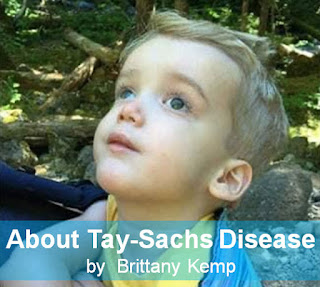Childhood Obesity: Can You Do Something About It
By Tiffany Atabansi
Geisinger Commonwealth School of Medicine, MBS 2018
TAtabansi@som.geisinger.edu
Mentor: Dr. Darina Lazarova, PhD
So, your child is 12 years old and you’re still waiting for them to shed their baby fat? Well there is a high possibility that your child is among the many American youth with childhood obesity. One in three U.S. youth between the ages 2-19 are overweight or obese. Obesity is a prevailing epidemic and is one of the most serious public issues till date. According to the Centers for Disease Control and Prevention (CDC), childhood obesity is defined as a body mass index (BMI) above the 95th percentile. Would you like to know the BMI of your child? Click here to calculate it.
So, what’s the real harm of being obese, you may ask? Obesity is a gateway condition to diseases associated with high morbidity and mortality rates. That means that your child is at risk for developing chronic diseases such as hypertension, dyslipidemia, type 2 diabetes, cardiovascular disease, stroke, gallbladder diseases, osteoarthritis, sleep apnea, respiratory problems, and certain cancers. Obesity and these diseases are considered diseases of affluence or lifestyle diseases. They are non-infectious diseases that are a result of increasing wealth and ease of life.
But, maybe you don’t consider yourself wealthy or having a particularly easy life.... Although, all children and adolescents are at risk, children from lower socioeconomic (SES) backgrounds are more susceptible to obesity. Why is that, you may ask? Increasing wealth in a society brings about an abundance of food that is cheap, of low quality, and with minimal nutrition. People of low SES are most prone to consuming these high-density foods. Low SES families typically are food insecure and/or live in a food desert. They are also at risk, because they have limited access to healthcare, are uneducated in matters related to lifestyle diseases, and usually have lower-income jobs that require more time to secure financial stability. Low-income families are less likely to realize that their child is overweight and/or intervene in child's eating and activity behaviors.
Is there any evidence? Childhood obesity in association with low SES is a widely researched topic. One study aimed at analyzing the relationship between household food insecurity with/ without hunger in infancy and childhood found that in households that had continuous food insecurity without hunger, children had 22% greater odds for obesity compared to children in predominately food-secure households. In the same study, maternal pre-pregnancy weight was a significant contributor to childhood obesity. Infants of overweight or obese mothers had a 65% greater risk for obesity.
Now you’re probably wondering if anything is being done, and yes, it is! Due to the enormous impact of the obesity epidemic, many organizations are looking for intervention strategies. One study used motivational interviewing (MI) and dietary counseling to lower the BMI percentile of their subjects. MI is a patient-centered communication style that uses specific techniques such as reflective listening, autonomy support, shared decision-making, and eliciting change talk. The researchers found that overweight children, whose parents received MI counseling from their primary care providers supplemented by a registered dieticians counseling, showed a significant reduction in BMI percentile. On a broader scale, federal policy is another avenue that can elicit change. Another study used microsimulation models to predict the impact of three federal policies on childhood obesity prevalence in 2032, after 20 years of implementation. The policies implemented were afterschool physical activity (PA) programs, sugar-sweetened beverage (SSB) excise tax, and a ban on fast food television ads targeting children. The simulation estimate indicates a significant decline in childhood obesity, suggesting that the policies would be effective.
If your family does not fit into the low SES category, you still need to be cautious… Because at the end of the day, the underlying factors are nutrition and lifestyle. With the prevalence of fast food industries, sugary beverages and snacks, diet has become calorie-dense. Children and adolescents need diets high in fruits, vegetables, protein and fiber. These food groups contain vital components that assist in the prevention of obesity and other lifestyle diseases. The average daily recommendation of fruits and vegetables for children aged between 2-18 ranges from two to three cups; however, the majority of the youth population does not meet this requirement, as the actual consumption rate is between 0.7 to 1.8 cups. This is a significant difference suggesting that many children and adolescents do not consume even the recommended minimum of fruit and vegetables. So, just an apple a day, would not keep the doctor away!
All this information can be overwhelming, but do not fret! Knowledge is power, and is the first step towards resolution. For more information, please watch this animation.
References:
1. Kristensen AH, Flottemesch TJ, Maciosek MV, et al. Reducing childhood obesity through U.S. federal policy: a microsimulation analysis. Am J Prev Med. 2014; 47(5):604–612.
2. Youfa Wang, Hyunjung Lim. The global childhood obesity epidemic and the association between socio-economic status and childhood obesity, International Review of Psychiatry. 2012; 24:3, 176-188.
3. Diseases of affluence. Articles of the world. Available at http://www.articleworld.org/index.php/Diseases_of_affluence.
4. Blanck HM, Sherry B, Pan L, Njai R. Food insecurity is associated with obesity among US adults in 12 states. J Acad Nutr Diet. 2012; 112(9): 1403- 1409.
5. Resnicow K, McMaster F, Bocian A, et al. Motivational interviewing and dietary counseling for obesity in primary care: an rct. Pediatrics. 2015; 135(4).
6. U.S. Department of Health and Human Services and U.S. Department of Agriculture. 2015–2020 Dietary Guidelines for Americans 8th Edition. December 2015. Available at http://health.gov/dietaryguidelines/2015/guidelines/.



Comments
Post a Comment